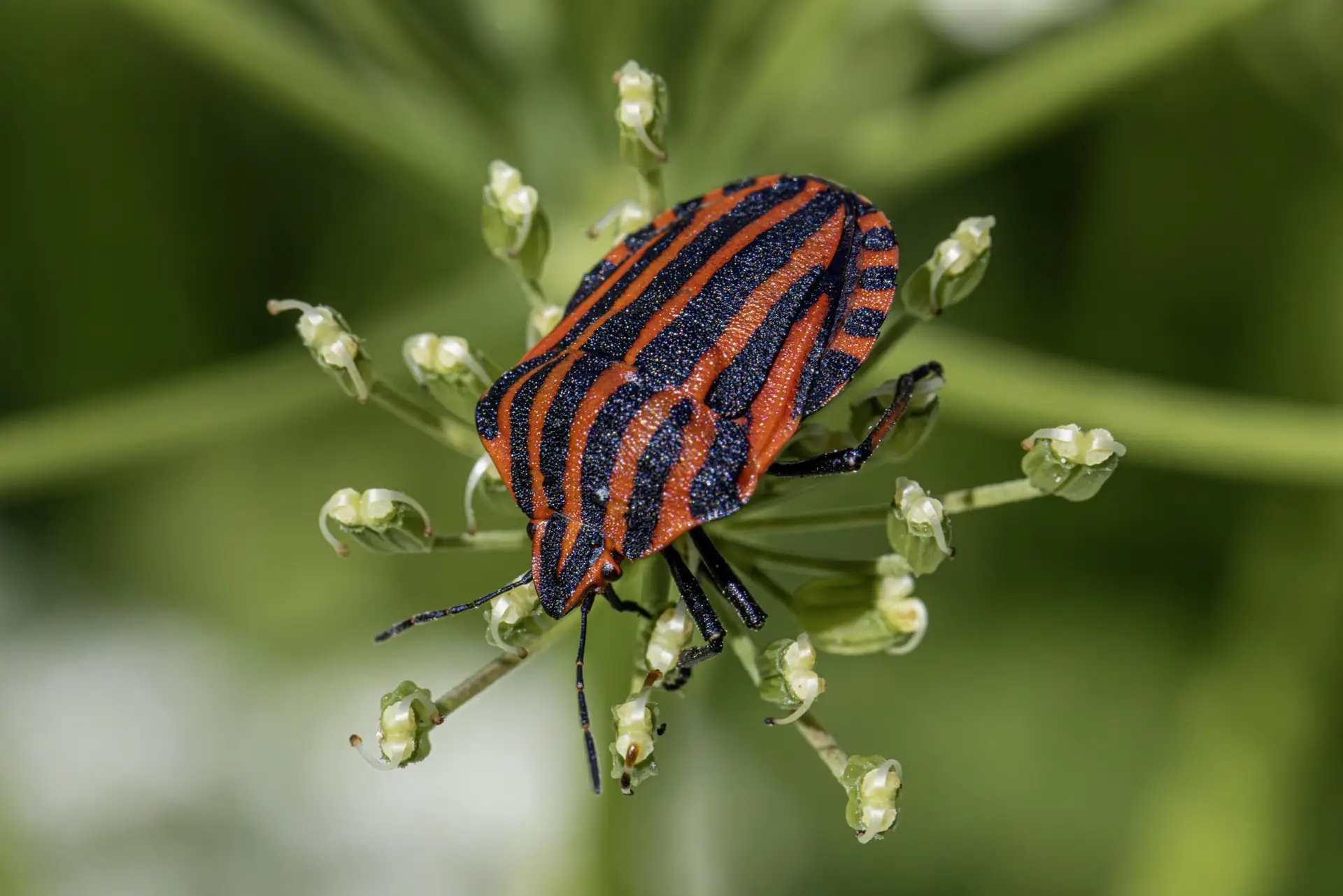The Striped Bug, scientifically known as Graphosoma lineatum, is a species of shield bug belonging to the family Pentatomidae. It is also commonly referred to as the Italian Striped-Bug or Minstrel Bug. These bugs are easily identifiable by their striking red and black striped markings on their shield-shaped bodies, which serve as a warning to predators of their foul taste and defensive capabilities.
Here are some key features and characteristics of Graphosoma lineatum:
- Coloration: The most distinctive feature of Graphosoma lineatum is its bold red and black stripes running longitudinally on its body. These stripes serve as a form of aposematic coloration, warning potential predators of their toxicity.
- Body Shape: Like other shield bugs, Graphosoma lineatum has a shield-shaped body, which is typical of insects in the order Hemiptera.
- Size: They are relatively small insects, typically ranging from around 9 to 12 millimeters in length as adults.
- Habitat: These bugs are commonly found in various habitats across Europe, particularly in areas with abundant vegetation and suitable conditions for their preferred host plants.
- Diet: Graphosoma lineatum primarily feeds on the sap of plants belonging to the family Apiaceae (formerly known as Umbelliferae), which includes species like wild carrot, fennel, and parsley.
- Lifecycle: Like other shield bugs, Graphosoma lineatum undergoes incomplete metamorphosis, with three life stages: egg, nymph, and adult. They lay their eggs on the host plants, and the nymphs resemble smaller versions of the adults but lack fully developed wings.
Graphosoma lineatum is not considered a significant pest and is generally harmless to humans. In fact, they can even be beneficial in controlling certain plant pests due to their predatory habits. However, in large numbers, they may cause damage to crops, particularly if their preferred host plants are cultivated in commercial agricultural settings.
Views: 2004
Subscribe to the newsletter:
